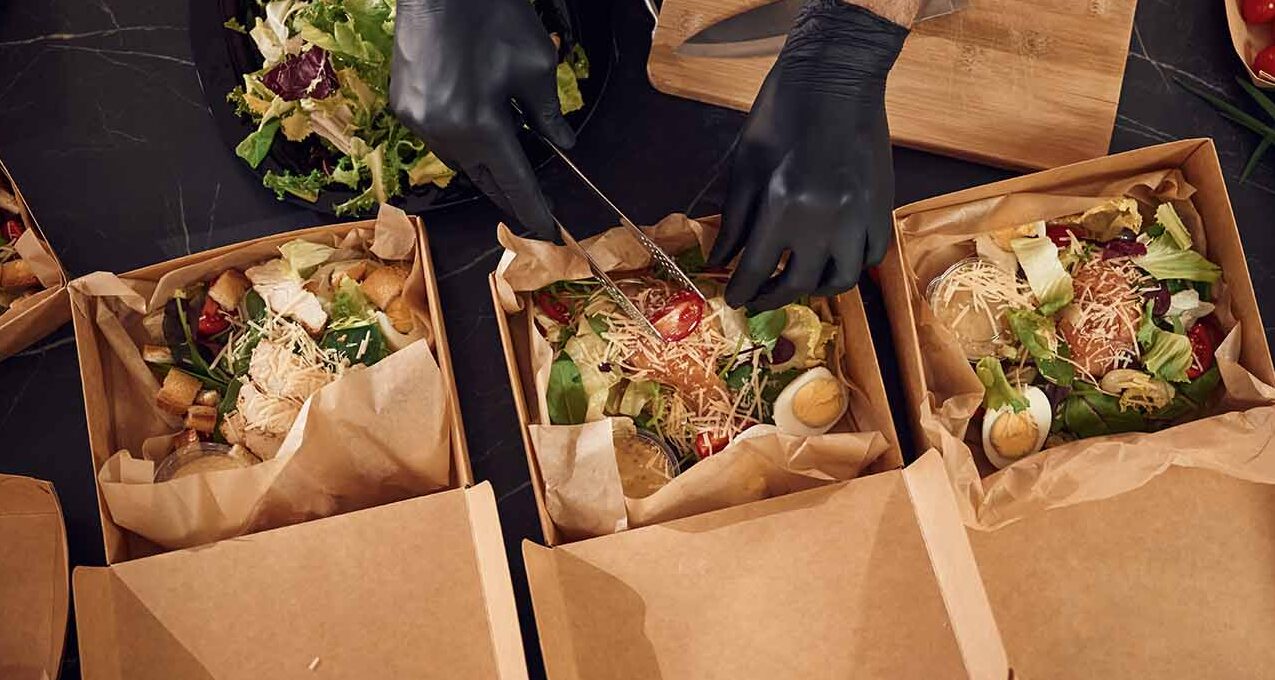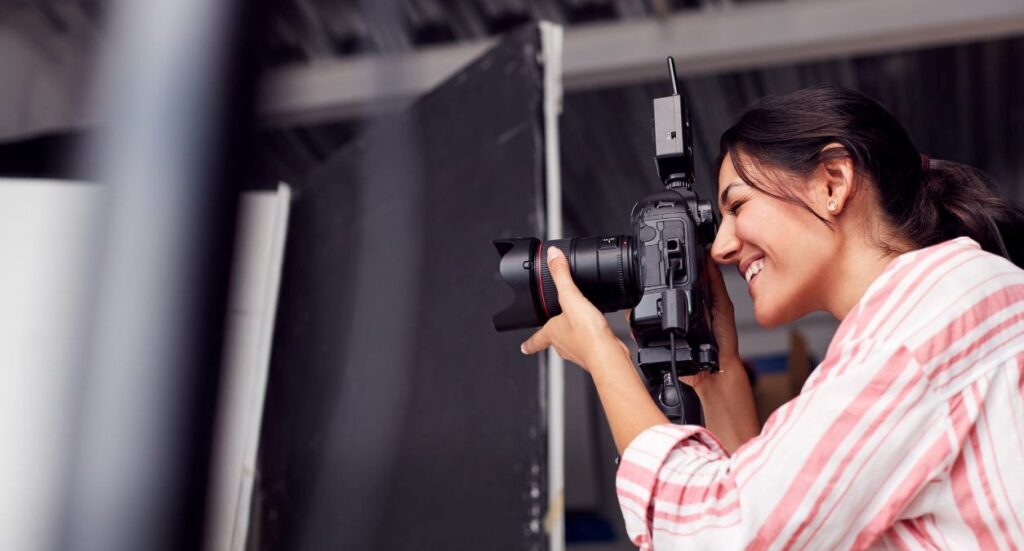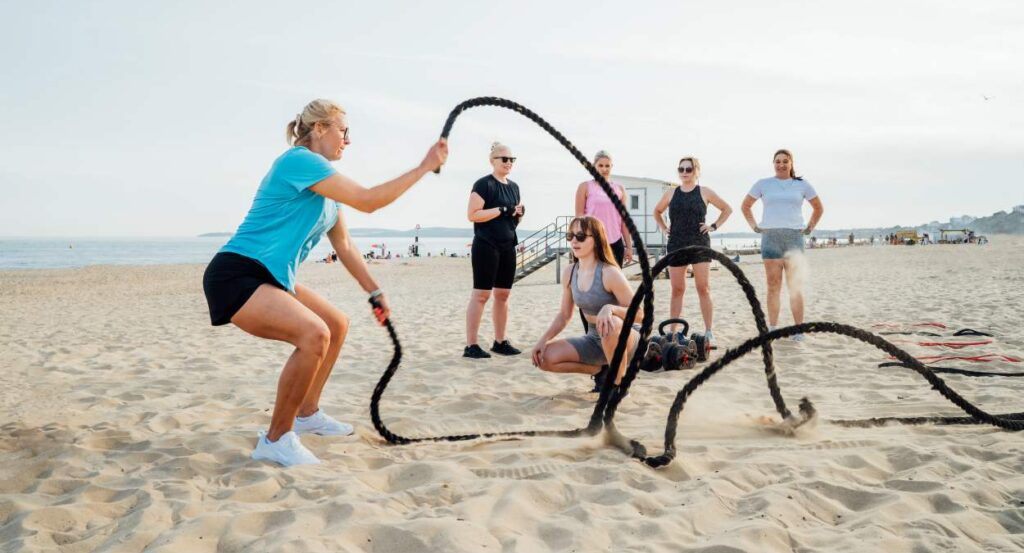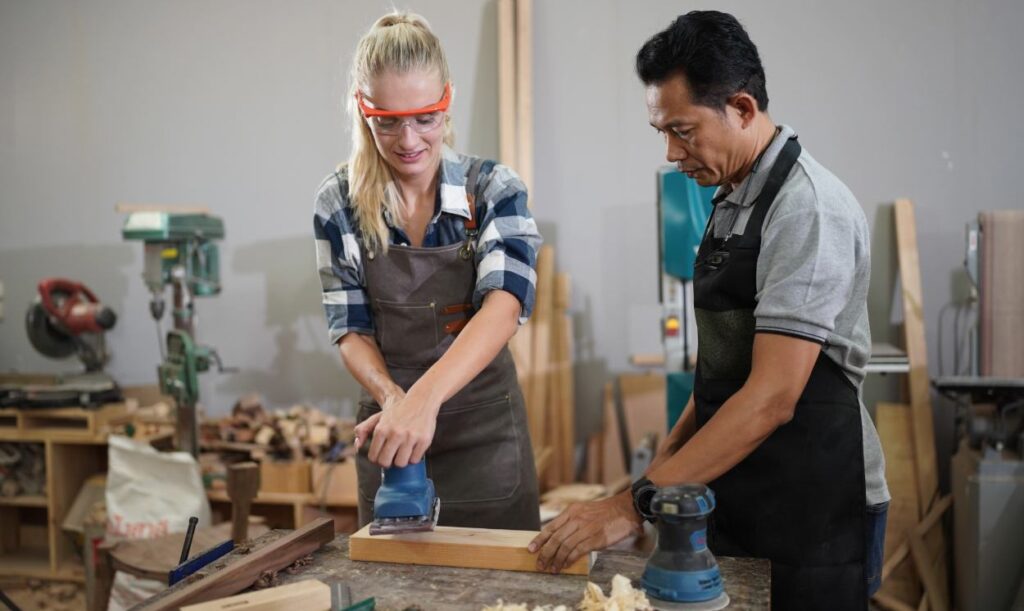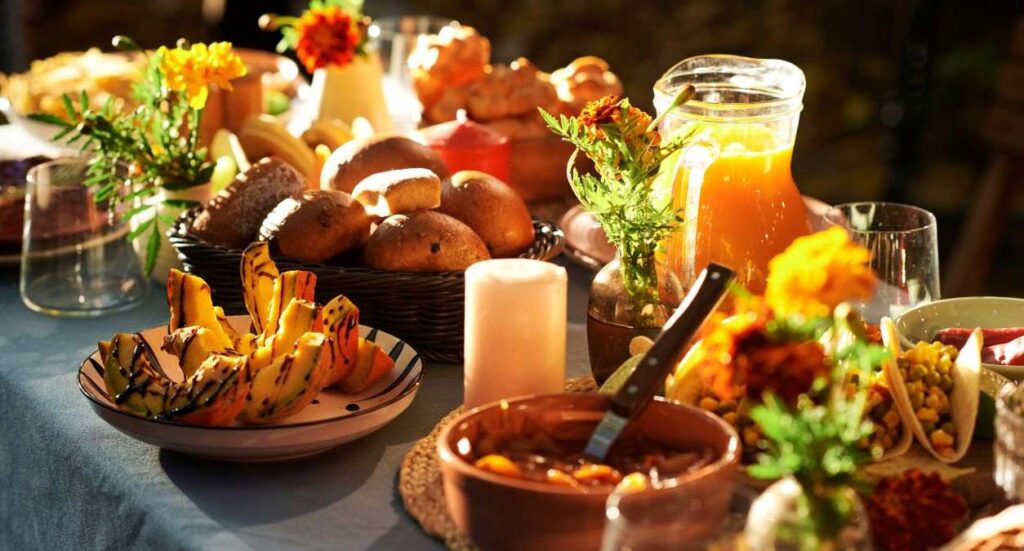Table of contents
Table of contents
Whether you’re plating up at a countryside wedding, serving gourmet burgers from a food truck, delivering cakes to a birthday party, or preparing canapés for a corporate event, offsite catering comes with its own set of challenges, particularly when it comes to food safety. The journey from kitchen to customer is a critical stage where a lot can go wrong if care isn’t taken. Temperature control, physical damage during transit, allergen management, and hygiene all need to be managed precisely.
Different types of caterers will face unique transportation hurdles. Street food traders must secure and transport ingredients or prepped food while operating from compact, mobile kitchens. Private chefs often prep at home or in hired kitchens, then complete dishes on location. Event caterers might be delivering full-course meals to remote venues with limited facilities. Cake makers face challenges in transporting fragile, often temperature-sensitive items that must arrive picture-perfect.
Whether you’re transporting ready-to-eat dishes, finishing preparation on site, or managing a combination of both, your method of transport needs to be as carefully considered as your menu. Remote locations, tricky access, event protocols, and tight service windows all add layers of complexity.
And let’s not forget compliance with food safety regulations is non-negotiable. Knowing exactly what’s expected can help you avoid fines, customer complaints, or worse, health risks.
This guide breaks down best practices, equipment recommendations, and the key regulations to help you transport food safely, preserve quality, and stay compliant with UK standards.
Why safe food transport matters
Transporting food safely is about far more than keeping it warm or intact, it’s a legal obligation and a vital part of your responsibility as a food business operator.
Mishandling food in transit can lead to:
- Temperature abuse (where food enters the ‘danger zone’ of 5°C to 63°C),
- Cross-contamination (especially between raw and ready-to-eat foods),
- Spoilage (affecting both taste and safety),
- Or even serious foodborne illnesses.
The implications of these risks are significant – not just for your customers’ health, but for your reputation and business as a whole.
Whether you’re a solo cake decorator or managing a large event team, your goal is the same: serve food that’s safe, delicious, and arrives in the same pristine condition it left your kitchen.
Proper methods for transporting food offsite
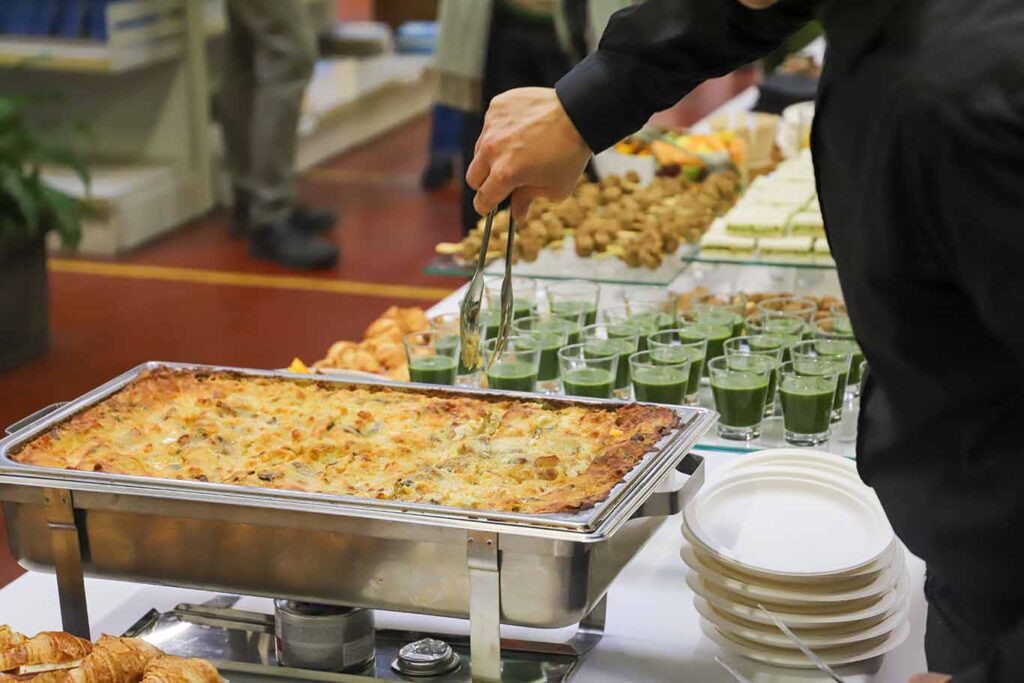
Effective offsite catering starts long before you load up the van. Here are some essential best practices to help ensure everything arrives safely and ready to serve:
Separate different food types
Always keep raw ingredients apart from cooked or ready-to-eat items. This reduces the risk of cross-contamination and is especially important if you’re transporting raw meats, fish, or eggs. Allergen-containing dishes should also be kept isolated, clearly sealed, and labelled.
Organise transport thoughtfully
Plan the order in which food and equipment will be used at your destination, and load the van accordingly, items needed first should be the last to go in. This helps speed up setup and avoids unnecessary unloading or reshuffling.
Pack securely
Use proper food-grade containers with tight-fitting lids. Stack containers safely to prevent tipping and make use of trolley systems or built-in shelving to keep items stable. Securing your load isn’t just about protecting food, it helps prevent injury when unloading too.
Control the clock
The longer food is out of temperature control, the greater the risk of bacterial growth. Aim to minimise the time between leaving your kitchen and serving the food. This is especially crucial for hot dishes, chilled desserts, and anything containing dairy or seafood.
Consider professional transport solutions
Depending on your operation, it may be worth investing in:
- A chilled or refrigerated van for larger deliveries or sensitive items.
- High-quality cool boxes or heated carriers to maintain safe temperatures over long journeys.
Even small catering setups can benefit from cool bags or car-powered warming units to protect food in transit.
What do caterers use to transport food?
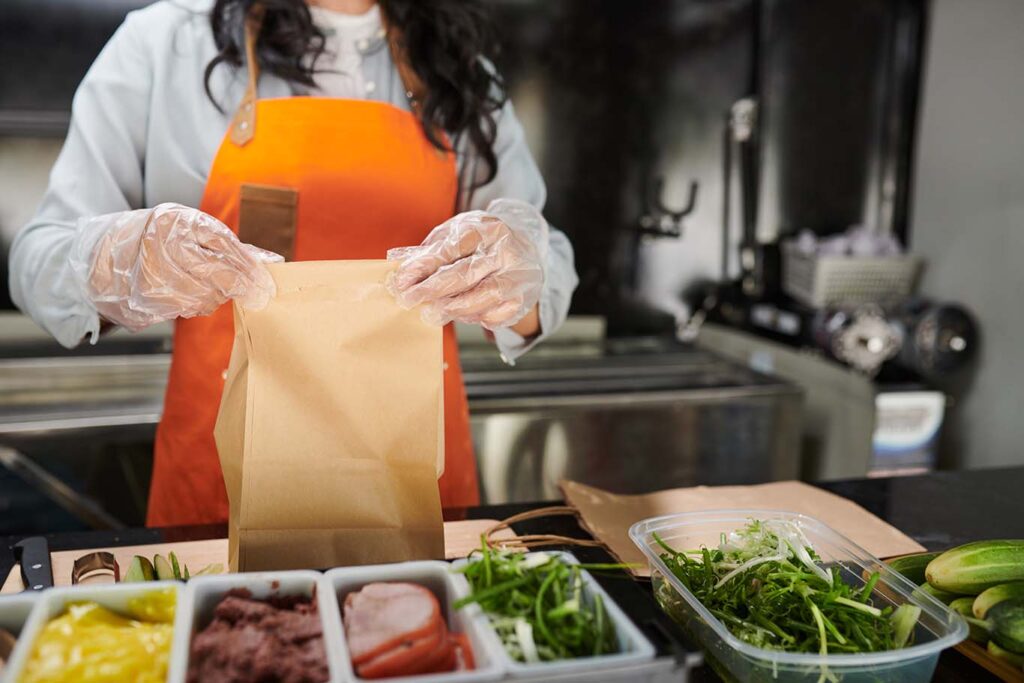
No matter your scale or style, the right tools make all the difference when it comes to safe and efficient food transport. Here are some of the essentials used by caterers across the industry:
- Insulated carriers – Keep food hot or cold without electricity. Ideal for short to medium distances.
- Thermal blankets – A great addition for short trips, particularly for trays of hot food or delicate desserts.
- Food-grade containers – Durable, sealed containers (like Cambro boxes or stainless gastronorm pans) protect food from spillage and contaminants.
- Trolleys and dollies – Useful for transporting heavy loads from vehicle to venue safely and efficiently.
- Built-in van shelving or racking – Prevents containers from sliding around during transit, ideal for larger caterers or mobile kitchens.
Investing in proper transport equipment not only improves safety but saves time, reduces waste, and helps maintain food presentation—essential for cake makers, event caterers, and private chefs alike.
How to transport hot food when catering
Transporting hot food safely requires strict temperature control and proper handling to maintain both safety and quality:
- Preheat insulated containers
Before loading food, preheat your insulated boxes to help maintain a holding temperature above 63°C. This can make a big difference over longer trips. - Use a food thermometer
Check and log the internal temperature of food both before loading and upon arrival. Digital probes are quick and accurate. - Minimise opening of containers
Keep lids closed during transit to retain heat and avoid unnecessary exposure to air, which can introduce contaminants or cause heat loss. - Separate hot and cold items
Don’t store hot and cold food together—use separate boxes or compartments to keep temperatures stable. - Be cautious of “warm” misconceptions
Just because a box feels warm doesn’t mean the food inside is at a safe temperature. Always measure to confirm.
Whether you’re delivering fresh pasta, a batch of roast dinners, or vegan curries for an outdoor event, your hot food needs consistent, high temperatures all the way to the plate.
Vehicle considerations with food safety
No matter your catering style your transport method plays a crucial role in maintaining food quality and safety. Here’s how to ensure your vehicle and journey are food-friendly:
Keep it clean
Your vehicle is effectively part of your kitchen. Clean and sanitise the load area regularly, especially if it’s also used for non-food purposes (like carrying equipment or supplies). Dedicated food delivery vans or segregated sections help minimise cross-contamination. Cake makers, for instance, should avoid crumbs or grease residue that could affect frosting or decorations.
Secure all containers
Whether it’s trays of hot meals, frosted cupcakes, or individually wrapped sandwiches, everything must be secured to avoid shifting, tipping, or damage. Use non-slip mats, shelving, bungee cords or specialist racks. For mobile chefs or food truck operators, ensure stock and prep items are locked down before moving.
Plan your route
Time and temperature are closely linked. A last-minute detour or traffic jam can compromise food safety, especially with chilled or hot-hold items. Use navigation apps that factor in traffic and allow buffer time for unexpected delays. For longer distances or high-value events, have a contingency plan.
Limit time out of temperature control
Aim to deliver and serve food within 90 minutes of leaving temperature-controlled storage. For pre-prepped platters, consider assembly at the destination if conditions allow. Refrigerated vans or cool boxes can help prolong safe holding times, especially for cold desserts, dairy-based products, or seafood.
Choose the right vehicle for your operation
- Street food traders might operate directly from their van but should ensure food is protected during transit and not exposed to outdoor elements unnecessarily.
- Baked goods businesses often use smaller cars or vans – consider dedicated cake carriers or climate control during hot weather.
Private chefs and large caterers may benefit from refrigerated or partitioned vans to transport multiple dishes and temperatures safely.
Regulations and best practices
Regardless of business size or style, all food businesses must comply with food safety regulations under UK law. Here’s how to stay on the right side of best practice:
Cleaning and hygiene
- Clean all containers, trolleys, and transport boxes after every use using food-safe sanitiser.
- If your vehicle is multi-use (e.g., used for personal or other business transport), it should be cleaned more frequently and thoroughly.
- Keep written cleaning records—even if you’re a solo operator. Local Environmental Health Officers often check these during inspections.
Contamination control
- Always separate raw and cooked foods. This applies whether you’re transporting marinated meats for a BBQ, or fruit tarts for a summer fete.
- Label allergen-containing dishes not just for the client but for your own team—mistakes often happen during loading and serving.
- For example – street food vans, store ingredients and finished meals in separate compartments where possible.
Temperature control
- Hot food should stay above 63°C—use insulated carriers, heated boxes, or electric holding cabinets.
- Cold food must stay below 8°C—especially important for cream-based desserts, fresh salads, or sushi.
- Use cool packs, chilled boxes, or refrigerated transport for anything that risks spoiling or falling into the “danger zone”.
- For outdoor events or food markets, plan how you’ll maintain temperatures throughout service—not just during transit.
Allergen management
- Allergen awareness is critical, especially with increasing numbers of dietary restrictions and legal obligations under Natasha’s Law.
- Label every item clearly, particularly for pre-packaged food or takeaway-style offerings.
- Don’t use the same containers or utensils for allergen-free and regular dishes. Even trace amounts can cause a reaction.
These steps all form part of a robust HACCP plan (Hazard Analysis and Critical Control Points)—a legal requirement for all food businesses in the UK.
Equipment that helps you transport food safely
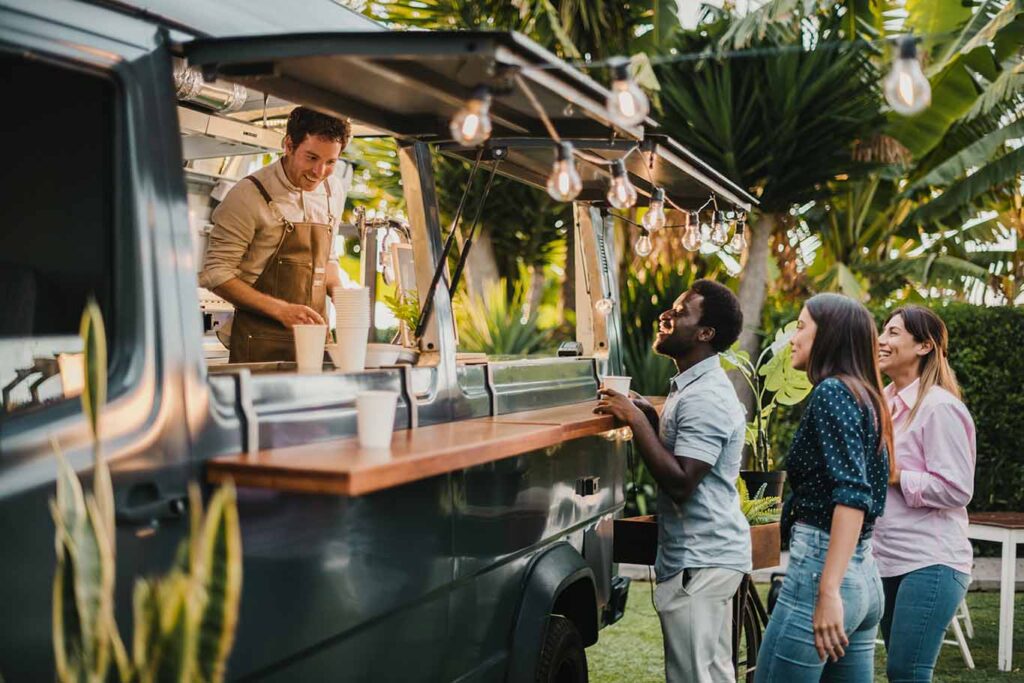
Having the right tools makes safe food delivery more efficient and reliable. Here’s a breakdown of what’s useful across different types of caterers:
Digital food thermometers
Check food temperatures before, during, and after transport. Quick-read thermometers are great for busy chefs, while probe loggers help you record data for audits.
Temperature data loggers
These record temperatures throughout transit—a must-have for event caterers or any business handling sensitive foods over longer journeys.
Food-safe insulated bags and containers
- Street vendors can use rugged, weatherproof boxes.
- Cake makers might prefer lightweight insulated coolers that fit in smaller vehicles.
- Large-scale caterers should invest in stackable Cambro-style carriers to manage volume and space efficiently.
Mobile apps and checklists
Digital tools help standardise food safety checks and reduce human error. Whether it’s a reminder to chill an item or log a clean-down, apps keep your workflow organised.
Cleaning kits
Always carry essentials like sanitising wipes, spray, disposable gloves, and bin liners—ideal for cleaning spills on the go or maintaining hygiene at events.
Common mistakes to avoid transporting food for catering
- Avoid these pitfalls to keep your food (and your customers) safe:
- Overfilling containers or failing to seal them properly.
- Stacking hot and cold items together.
- Relying on gut feeling rather than a thermometer.
- Failing to train staff on proper transport protocols.
Staff training and preparation
Your team needs to know the ‘why’ as well as the ‘how’. Provide training on:
- Food safety and hygiene.
- Equipment use and cleaning.
- Allergen awareness.
- Emergency procedures for delays or accidents.
- Make sure everyone has access to SOPs (Standard Operating Procedures) and a backup plan if something goes wrong.
Transporting food safely isn’t just about ticking boxes—it’s about delivering consistent quality and protecting your customers and business. With proper planning, equipment, and staff training, you can serve up delicious food wherever your next event takes you.
Get Caterers Insurance from Protectivity
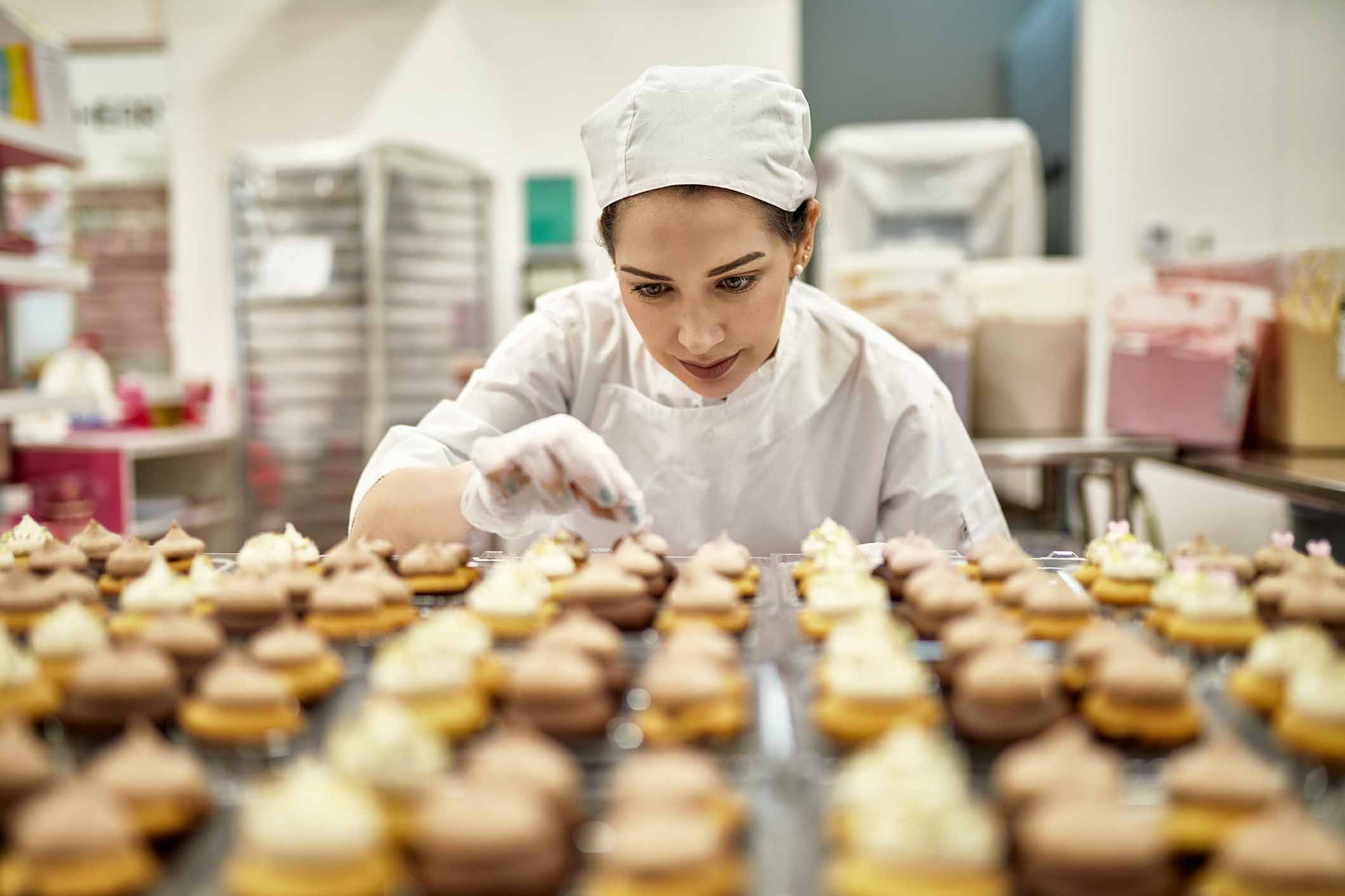
*Disclaimer – This blog has been created as general information and should not be taken as advice. Make sure you have the correct level of insurance for your requirements and always review policy documentation. Information is factually accurate at the time of publishing but may have become out of date.
Last updated by




